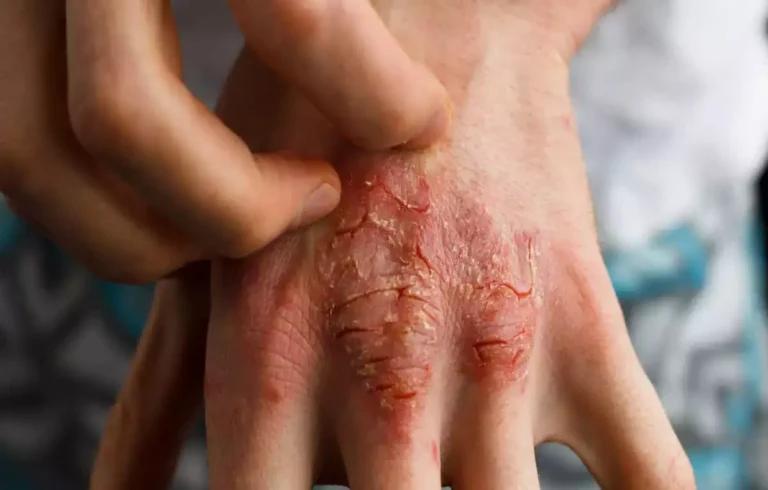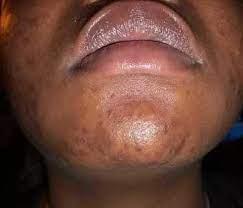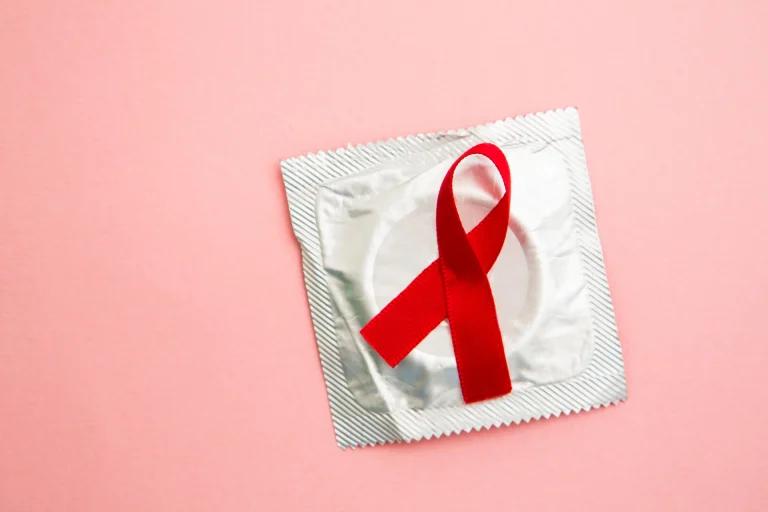Living with HIV requires knowledge and awareness of its various symptoms. One such symptom that individuals infected with HIV may experience is a rash. In this comprehensive guide, we will explore the nature of the HIV rash, its causes, symptoms, and how to identify it. Remember, early detection is crucial for the effective management of HIV, so let’s dive in and learn more.
What is HIV?
Human Immunodeficiency Virus (HIV) is a virus that attacks the immune system, specifically targeting CD4 cells (a type of white blood cell). This virus weakens the immune system, making it difficult for the body to fight off infections and diseases. HIV is primarily transmitted through sexual contact, sharing needles, or from an infected mother to her child during childbirth or breastfeeding.
How does HIV progress?
Once a person becomes infected with HIV, the virus enters the body and starts replicating rapidly. During the initial stage, known as acute HIV infection, individuals may experience early signs of flu-like symptoms, which can include a rash. Following this stage, the virus may not cause any noticeable symptoms for several years, but it continues to damage the immune system. This progression can vary from person to person, with some individuals remaining asymptomatic for up to 10 years. However, without proper treatment, HIV can lead to acquired immunodeficiency syndrome (AIDS), a condition where the immune system is severely compromised.
HIV rash: Overview
An HIV rash is a common symptom experienced by individuals infected with HIV. It usually appears during the acute phase of the infection, which occurs 2-6 weeks after exposure. The rash is often accompanied by other flu-like symptoms, such as fever, sore throat, and body aches. However, it is important to note that not everyone with HIV will develop a rash, and the presence of a rash does not confirm an HIV infection.
Symptoms of HIV rash
The most common symptoms associated with an HIV rash include raised temperature (fever), sore throat, and a body rash. Other symptoms that may accompany the rash include tiredness, joint pain, muscle pain, and swollen lymph nodes. It is important to remember that these symptoms are not exclusive to HIV and can be caused by various other conditions.
Causes of HIV rash
Several factors can cause an HIV rash. The primary cause is the immune system’s response to the HIV itself. As the virus replicates and spreads throughout the body, it triggers an inflammatory response, leading to the development of a rash. Additionally, certain HIV medications can also cause rashes as a side effect. It is important to differentiate between a rash caused by HIV infection and a rash caused by medication, as the treatment approach may differ.
Identifying the HIV rash
Recognizing the HIV rash is crucial for early detection and timely intervention. Here are some key characteristics to look for when identifying an HIV rash.
Appearance and characteristics
The HIV rash typically presents as small red bumps or spots on the skin. These bumps may be flat or slightly raised and can merge to form larger patches. The rash may have a blotchy or uneven pattern and is often accompanied by itchiness. In some cases, the rash may resemble a measles-like appearance, with red spots and a central clearing. It appears reddish, in people with fair skin, or dark purplish in people with dark skin.
Location on the body
The HIV rash can occur on various parts of the body, including the trunk, arms, legs, face, and palms of the hands. It is important to note that the rash is not limited to these areas and can appear anywhere on the body.
Duration and progression
The duration of an HIV rash can vary from person to person. In most cases, the rash lasts for 1-2 weeks, but it can persist for a longer period. The rash may evolve and change in appearance during its course, and it may be intermittent or constant. It is essential to monitor the progression of the rash and any accompanying symptoms.
Distinguishing HIV rash from other skin rashes
While the presence of a rash may raise concerns about HIV infection, it is essential to differentiate an HIV rash from other types of rashes. People living with HIV may get painful rashes from other infections that result because of a weakened immune system. Here are some guidelines to help distinguish the HIV rash from other rashes.
Differentiating HIV rash from allergic reactions
HIV rashes can sometimes be mistaken for allergic reactions. However, there are a few key differences that can help differentiate between the two. Allergic reactions often occur shortly after exposure to an allergen, whereas an HIV rash typically appears during the acute phase of infection. Additionally, allergic reactions tend to be more widespread and may involve hives or swelling, while an HIV rash is more localized and may be accompanied by flu-like symptoms.
Distinguishing HIV rash from heat rash
Heat rash, also known as prickly heat, is a common skin condition that occurs due to excessive sweating and blocked sweat ducts. It typically presents as small, itchy bumps on the skin. While a heat rash may resemble an HIV rash in some cases, the main distinguishing factor is the underlying cause. Heat rash is caused by heat and sweat, whereas an HIV rash is a result of the immune system’s response to the virus.
Differentiating HIV rash from other viral rashes
Various viral infections can cause rashes similar to an HIV rash. These include measles, rubella, herpes simplex, shingles (also known as herpes zoster) and cytomegalovirus (CMV) infections. To differentiate between an HIV rash and other viral rashes, it is important to consider the individual’s risk factors for HIV, the presence of other flu-like symptoms, and the timing of the rash in relation to exposure.
When to seek medical attention
While an HIV rash may not always be a cause for immediate concern, there are certain situations where medical attention should be sought.
Potential complications
In some cases, an HIV rash can be accompanied by serious complications. These can include Stevens-Johnson syndrome (SJS) and Toxic Epidermal Necrolysis (TEN) severe and potentially life-threatening hypersensitivity reactions. Symptoms of SJS include fever, flu-like symptoms, a widespread rash, and painful blisters. If any of these symptoms occur, immediate medical attention should be sought.
Seeking a professional diagnosis
If you suspect that you may have been exposed to HIV and are experiencing a rash, it is important to seek a professional diagnosis. A healthcare provider can perform a thorough evaluation, including a physical examination and relevant laboratory tests. This will help determine the cause of the rash and guide appropriate treatment options.
HIV treatment and management
Addressing the underlying HIV infection is crucial for managing an HIV rash. Here are some key aspects of treatment and management.
Addressing underlying HIV infection
Treating an HIV rash involves managing the underlying HIV infection. Antiretroviral therapy (ART) is the primary treatment approach for HIV and can help control the virus, improve immune function, and prevent the progression of the disease. It is important to adhere to the prescribed antiretroviral medication and follow up with healthcare providers regularly.
Managing discomfort and itching
To alleviate the discomfort and itching associated with an HIV rash, various measures can be taken. These include using over-the-counter topical corticosteroid creams such as hydrocortisone, taking antihistamines, practicing good skin hygiene, avoiding harsh soaps or irritants, and keeping the affected area cool and dry. It is important to consult with a healthcare provider before using any medications or creams.
Prevention and transmission
Preventing HIV transmission is crucial for reducing the risk of developing an HIV rash and other complications. Here are some key preventive measures to consider.
Practice safe sex
Engaging in safe sexual practices is essential for preventing the transmission of HIV. This includes using condoms consistently and correctly, limiting the number of sexual partners, and getting tested for HIV and other sexually transmitted infections regularly.
Avoid sharing needles
Sharing needles or other drug paraphernalia significantly increases the risk of HIV transmission. If you use injectable drugs, it is important to use sterile needles and avoid sharing equipment. Seeking support from substance abuse treatment programs can also help reduce the risk of HIV transmission.
Regular HIV testing
Regular HIV testing is crucial, especially if you engage in high-risk behaviors or have had potential exposure to the virus. Early detection allows for timely intervention and appropriate management. Testing can be done at healthcare clinics, community centers, or through at-home testing kits.
Living with HIV
Living with HIV requires ongoing support, care, and lifestyle adjustments. Here are some key aspects to consider.
Support and counseling
Seeking support from healthcare providers, support groups, and counseling services can greatly assist individuals living with HIV. Emotional support, education, and guidance can help navigate the challenges associated with HIV and improve overall well-being.
Maintaining a healthy lifestyle
Maintaining a healthy lifestyle is essential for individuals living with HIV. This includes eating a balanced diet, engaging in regular physical activity, getting enough restful sleep, and avoiding tobacco, alcohol, and recreational drugs. It is also important to adhere to prescribed medications and follow up with healthcare providers for regular check-ups.
Additional resources
For more information on HIV and AIDS, you can refer to the following resources:
- NAM aidsmap: HIV and AIDS
- National AIDS Trust: symptoms
- Terrence Higgins Trust: stages of HIV infection
Conclusion
Identifying and understanding the HIV rash is crucial for individuals living with HIV and healthcare providers. By recognizing the appearance, location, and progression of the rash, individuals can seek timely medical attention and receive appropriate treatment. Remember, early detection and management of HIV are key to maintaining overall health and well-being. Stay informed, get tested regularly, and seek medical advice from healthcare professionals to effectively manage HIV and its associated symptoms.
Sources
Medical Disclaimer
NowPatient has taken all reasonable steps to ensure that all material is factually accurate, complete, and current. However, the knowledge and experience of a qualified healthcare professional should always be sought after instead of using the information on this page. Before taking any drug, you should always speak to your doctor or another qualified healthcare provider.
The information provided here about medications is subject to change and is not meant to include all uses, precautions, warnings, directions, drug interactions, allergic reactions, or negative effects. The absence of warnings or other information for a particular medication does not imply that the medication or medication combination is appropriate for all patients or for all possible purposes.
Related Articles
What is the timeline of HIV rash?
The HIV rash typically appears 2-6 weeks after exposure to the virus during the acute phase of infection. It lasts for 1-2 weeks, but the duration can vary from person to person.
Is an HIV rash itchy?
Yes, an HIV rash can be accompanied by itchiness. However, not all individuals with an HIV rash experience itching.
Can an HIV rash appear before other symptoms?
Yes, an HIV rash can appear before or alongside other flu-like symptoms during the acute phase of infection. However, it is important to note that not everyone with HIV will develop a rash.







